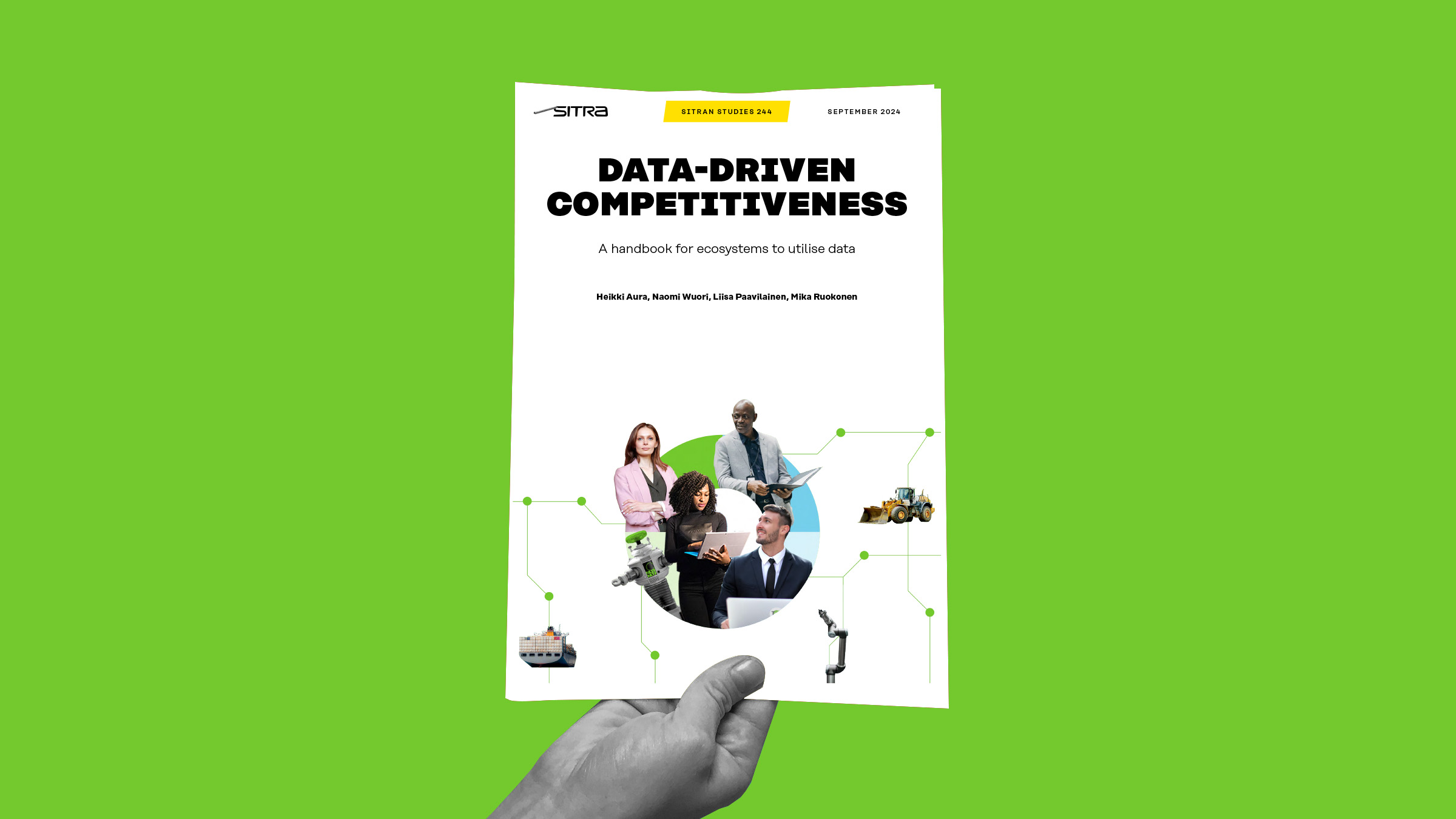Summary
Many of the digital and data-driven business opportunities that lie ahead will only open up through collaboration with other organisations. This handbook brings together best practices, lessons learned and examples from pioneers who have developed new data-driven solutions by working in ecosystems.
At the start of an ecosystem activity between different organisations, the members jointly define the purpose and objectives of the ecosystem’s joint activities. These define the solutions that the collaboration aims to develop. Successful solution design is based on identifying client needs.
In addition to clear objectives, the ecosystem needs an organisational model that supports collaboration. A carefully chosen organisational model will ensure that the activities are carried out effectively. To strengthen trust between ecosystem members and to support their activities, it is advisable to draw up the necessary agreements defining the responsibilities, roles and obligations of the actors involved.
An ecosystem may comprise a variety of different organisations and therefore needs a working culture that fosters cooperation and trust. A shared culture is created through the interaction between those involved. In a culture of trust and openness, the different organisations learn about each other’s strengths and are able to use them effectively to develop the solution the ecosystem is seeking. A shared culture is strengthened by agreeing on clear ways of working, operating models and ground rules.
Once the foundations for collaboration are in place, the ecosystem starts to develop an implementation plan. This will include use cases for data-driven solutions that provide a structured description of how the product or service will be used in practice. In addition to the use cases, a business plan is also required, including market and client analysis, a revenue model, a roadmap to support implementation, and the necessary risk analyses.
The transition to the implementation phase often takes place through a pilot, where the solution is tested with the target group. The pilot should be carried out in stages, testing hypotheses about client needs, commercial potential and technical implementation. The success of the pilot is evaluated through quantitative and qualitative means. Stakeholders in the ecosystem can then jointly assess the performance of the solution and decide on its wider deployment. Finally, the results will be clearly communicated to all participants and stakeholders. From a successful pilot, the ecosystem can move towards commercialising the solution.
It is important to remember that ecosystem collaboration does not always happen in the same order. It is worthwhile to continually assess critical aspects of the operation and make changes where necessary. Flexibility and adaptability are the strengths of an ecosystem, as new situations and changes in the world around us may require rapid and unplanned ways of working.
